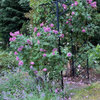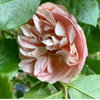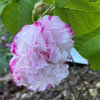Is there an organic control for sawfly larvae?
Miewxs
20 years ago
Featured Answer
Sort by:Oldest
Comments (18)
Barb_OH
20 years agoMiewxs
20 years agoRelated Professionals
Glendora Landscape Architects & Landscape Designers · Port Royal Landscape Architects & Landscape Designers · Salisbury Landscape Architects & Landscape Designers · Billerica Landscape Contractors · Canton Landscape Contractors · Clermont Landscape Contractors · Apollo Beach Landscape Contractors · Berkeley Heights Landscape Contractors · Berwyn Landscape Contractors · Downey Landscape Contractors · Gaithersburg Landscape Contractors · Haverhill Landscape Contractors · Oak Forest Landscape Contractors · Pikesville Landscape Contractors · Plantation Landscape ContractorsKimm1
20 years agowoolywoof
20 years agoMiewxs
20 years agolydia_s
20 years agorandy
20 years agodrbugman
20 years agolydia_s
20 years agoField
20 years agodrbugman
20 years agomoonwolf23
20 years agoWildBloom
20 years agoaisha_6pa
20 years agojenswrens
20 years agokrikit
20 years agomichaelg
19 years ago
Related Stories

GARDENING GUIDESHow to Switch to an Organic Landscape Plan
Ditch the chemicals for a naturally beautiful lawn and garden, using living fertilizers and other nontoxic treatments
Full Story
FALL GARDENING5 Ways to Put Fall Leaves to Work in Your Garden
Improve your soil and yard the organic way with a valuable garden booster that grows on trees
Full Story
MONTHLY HOME CHECKLISTSTo-Dos: Your August Home Checklist
Take these steps to get your home and family organized for fall
Full Story
LIFEYou Said It: ‘Life Is Better When the House Is Clean’ and More
Highlights from the week include great advice for a clean, organized and happy 2015
Full Story
GARDENING GUIDESGet on a Composting Kick (Hello, Free Fertilizer!)
Quit shelling out for pricey substitutes that aren’t even as good. Here’s how to give your soil the best while lightening your trash load
Full Story
GARDENING AND LANDSCAPING4 Good Ways to Get Rid of Mosquitos in Your Yard
Stay safe from West Nile virus and put an end to irksome itches with these tools and methods for a porch, patio or yard
Full Story
LIFEThe Top 5 Ways to Save Water at Home
Get on the fast track to preserving a valuable resource and saving money too with these smart, effective strategies
Full Story
FLOWERS AND PLANTSHelp Monarchs and Other Butterflies by Planting Common Milkweed
Summer-blooming Asclepias syriaca is an important larval host plant for the monarch butterfly and attracts a number of pollinating insects
Full Story
GARDENING GUIDES13 Risks to Take for True Garden Rewards
Go ahead, be a rebel. Breaking rules in the garden can lead to more happiness, creativity and connection with the earth
Full Story
REGIONAL GARDEN GUIDESGreat Lakes Gardener's June Checklist
Hear the berries beckoning? Pluck them while enjoying the wealth of garden blossoms and maybe kicking out a few bugs this month
Full Story0
More Discussions











veilchen